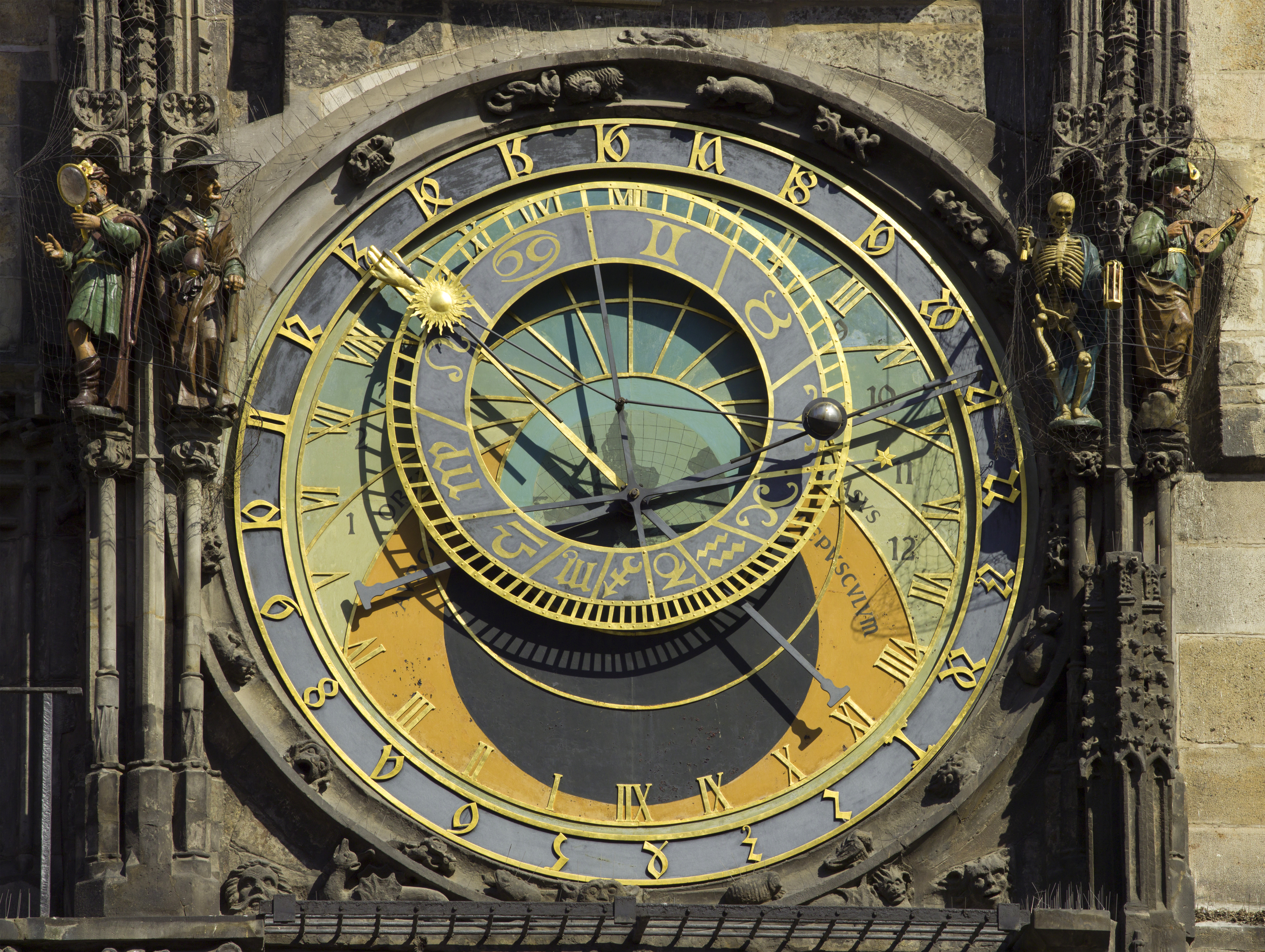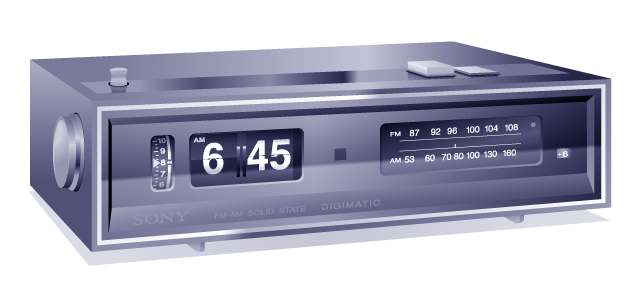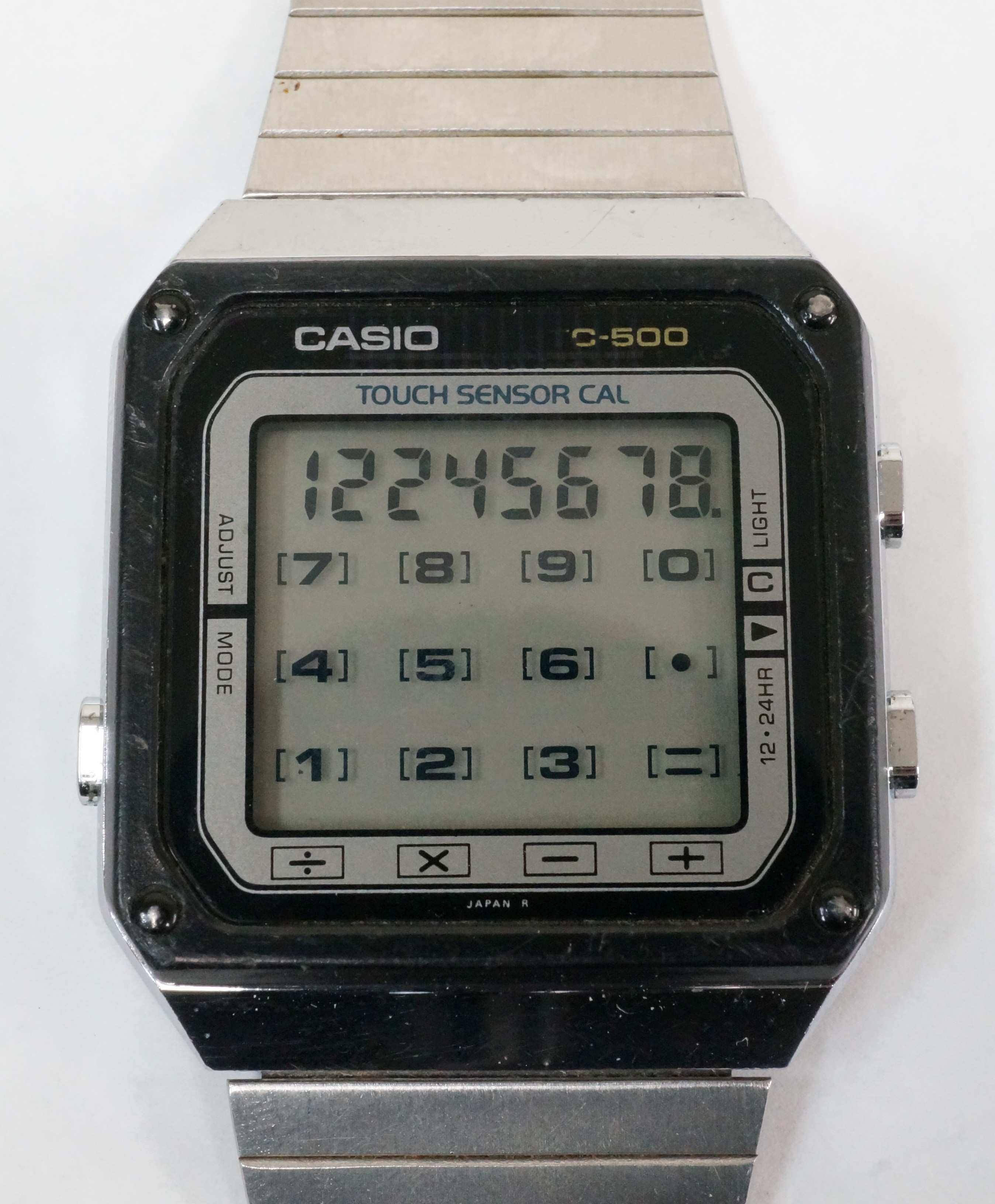|
World Clock
A world clock is a clock which displays the time for various cities around the world. The display can take various forms: *The clock face can incorporate multiple round analogue clocks with moving hands or multiple digital clocks with numeric readouts, with each clock being labelled with the name of a major city or time zone in the world. The World Clock in Alexanderplatz displays 146 cities in all 24 time zones on its head. *It could also be a picture map of the world with embedded analog or digital time-displays. *A moving circular map of the world, rotating inside a stationary 24-hour dial ring. Alternatively, the disc can be stationary and the ring moving. *Light projection onto a map representing daytime, used in the Geochron, a brand of a particular form of world clock. There are also worldtime watches, both wrist watches and pocket watches. Sometime manufacturers of timekeepers erroneously apply the worldtime label to instruments that merely indicate time for two or ... [...More Info...] [...Related Items...] OR: [Wikipedia] [Google] [Baidu] |
Urania-Weltzeituhr Auf Dem Alexanderplatz In Berlin 2015
The World Clock (german: Weltzeituhr), also known as the Urania World Clock (german: Urania-Weltzeituhr, link=no), is a large turret-style world clock located in the public square of Alexanderplatz in Mitte, Berlin. By reading the markings on its metal rotunda, the current time in 148 major cities from around the world can be determined.Helmut Caspar: ''Ärger mit der Weltzeituhr am Alex. Städtenamen sind nicht korrekt.'' In: '' Märkische Allgemeine Zeitung'', 24/25 December 1997. Since its erection in 1969, it has become a tourist attraction and meeting place. In July 2015, the German government declared the clock as a historically and culturally significant monument. History The sixteen ton world clock was opened to the public on 30 September 1969, shortly before the twentieth anniversary of the German Democratic Republic, along with the Berlin TV Tower ('). The erection of the clock was part of a larger plan to expand and reorganize Alexanderplatz as a whole. At the ... [...More Info...] [...Related Items...] OR: [Wikipedia] [Google] [Baidu] |
Pocket Watch
A pocket watch (or pocketwatch) is a watch that is made to be carried in a pocket, as opposed to a watch, wristwatch, which is strapped to the wrist. They were the most common type of watch from their development in the 16th century until wristwatches became popular after World War I during which a transitional design, trench watches, were used by the military. Pocket watches generally have an attached chain to allow them to be secured to a waistcoat, lapel, or belt (clothing), belt loop, and to prevent them from being dropped. Watches were also mounted on a short leather strap or fob, when a long chain would have been cumbersome or likely to catch on things. This fob could also provide a protective flap over their face and crystal. Women's watches were normally of this form, with a watch fob that was more decorative than protective. Chains were frequently decorated with a silver or Vitreous enamel, enamel pendant, often carrying the arms of some Club (organization), club or s ... [...More Info...] [...Related Items...] OR: [Wikipedia] [Google] [Baidu] |
Clocks
A clock or a timepiece is a device used to measure and indicate time. The clock is one of the oldest human inventions, meeting the need to measure intervals of time shorter than the natural units such as the day, the lunar month and the year. Devices operating on several physical processes have been used over the millennia. Some predecessors to the modern clock may be considered as "clocks" that are based on movement in nature: A sundial shows the time by displaying the position of a shadow on a flat surface. There is a range of duration timers, a well-known example being the hourglass. Water clocks, along with the sundials, are possibly the oldest time-measuring instruments. A major advance occurred with the invention of the verge escapement, which made possible the first mechanical clocks around 1300 in Europe, which kept time with oscillating timekeepers like balance wheels., pp. 103–104., p. 31. Traditionally, in horology, the term ''clock'' was used for a striki ... [...More Info...] [...Related Items...] OR: [Wikipedia] [Google] [Baidu] |
Astronomical Clock
An astronomical clock, horologium, or orloj is a clock with special mechanisms and dials to display astronomical information, such as the relative positions of the Sun, Moon, zodiacal constellations, and sometimes major planets. Definition The term is loosely used to refer to any clock that shows, in addition to the time of day, astronomical information. This could include the location of the Sun and Moon in the sky, the age and Lunar phases, the position of the Sun on the ecliptic and the current zodiac sign, the sidereal time, and other astronomical data such as the Moon's nodes (for indicating eclipses) or a rotating star map. The term should not be confused with ''astronomical regulator'', a high precision but otherwise ordinary pendulum clock used in observatories. Astronomical clocks usually represent the Solar System using the geocentric model. The center of the dial is often marked with a disc or sphere representing the Earth, located at the center of the Solar Sy ... [...More Info...] [...Related Items...] OR: [Wikipedia] [Google] [Baidu] |
Jens Olsen's World Clock
Jens Olsen's World Clock or Verdensur is an advanced astronomical clock which is displayed in Copenhagen City Hall. The clock was designed and calculated by Jens Olsen (1872–1945), who was a skilled locksmith, and later learned the trade of clockmaking. He also took part in the beginning of the clock's construction, and died in 1945, 10 years before the clock was completed. The clock consists of 12 movements which together have 15,448 parts. The clock is mechanical and must be wound once a week. Displays include lunar and solar eclipses, positions of the stellar bodies, and a perpetual calendar, in addition to the time. The fastest gear completes a revolution every ten seconds and the slowest every 25,753 years. The calculations for the clock were made up until 1928, after which they were supervised by the astronomer Elis Strömgren Svante Elis Strömgren (31 May 1870 – 5 April 1947) was a Sweden, Swedish–Denmark, Danish astronomer. Strömgren was born in 1870 in H ... [...More Info...] [...Related Items...] OR: [Wikipedia] [Google] [Baidu] |
Time Zone
A time zone is an area which observes a uniform standard time for legal, Commerce, commercial and social purposes. Time zones tend to follow the boundaries between Country, countries and their Administrative division, subdivisions instead of strictly following longitude, because it is convenient for areas in frequent communication to keep the same time. All time zones are defined as offsets from Coordinated Universal Time (UTC), ranging from UTC−12:00 to UTC+14:00. The UTC offset, offsets are usually a whole number of hours, but a few zones are offset by an additional 30 or 45 minutes, such as in Indian Standard Time, India, Time in Australia, South Australia and Nepal Time, Nepal. Some areas of higher latitude use daylight saving time for about half of the year, typically by adding one hour to local time during spring (season), spring and summer. List of UTC offsets In the table below, the locations that use daylight saving time (DST) are listed in their UTC offse ... [...More Info...] [...Related Items...] OR: [Wikipedia] [Google] [Baidu] |
Manezhnaya Square, Moscow
Manezhnaya ( rus, Манежная площадь, p=mɐˈnʲeʐnəjə ˈploɕːɪtʲ, '' Manege Square'') is a pedestrian open space in the Tverskoy District, at the heart of Moscow. It is bound by the Hotel Moskva to the east, the State Historical Museum and the Alexander Garden to the south, the Moscow Manege to the west, and the 18th-century headquarters of the Moscow State University to the north. The square forms a vital part of downtown Moscow, connecting Red Square (which sprawls behind the Iberian Gate immediately to the south) with the major traffic artery Tverskaya Street, which starts here and runs northwestward in the direction of Saint Petersburg. It is served by three Moscow Metro stations: Okhotny Ryad, Ploshchad Revolyutsii, and Teatralnaya. History The Manezhka (as it is familiarly known) had its origins in Moiseyevskaya Square, which was formed in 1798 in consequence of the demolition of the medieval Moiseyevsky Monastery which had stood on the banks of t ... [...More Info...] [...Related Items...] OR: [Wikipedia] [Google] [Baidu] |
Time Zone
A time zone is an area which observes a uniform standard time for legal, Commerce, commercial and social purposes. Time zones tend to follow the boundaries between Country, countries and their Administrative division, subdivisions instead of strictly following longitude, because it is convenient for areas in frequent communication to keep the same time. All time zones are defined as offsets from Coordinated Universal Time (UTC), ranging from UTC−12:00 to UTC+14:00. The UTC offset, offsets are usually a whole number of hours, but a few zones are offset by an additional 30 or 45 minutes, such as in Indian Standard Time, India, Time in Australia, South Australia and Nepal Time, Nepal. Some areas of higher latitude use daylight saving time for about half of the year, typically by adding one hour to local time during spring (season), spring and summer. List of UTC offsets In the table below, the locations that use daylight saving time (DST) are listed in their UTC offse ... [...More Info...] [...Related Items...] OR: [Wikipedia] [Google] [Baidu] |
Wrist Watch
A watch is a portable timepiece intended to be carried or worn by a person. It is designed to keep a consistent movement despite the motions caused by the person's activities. A wristwatch is designed to be worn around the wrist, attached by a watch strap or other type of bracelet, including metal bands, leather straps or any other kind of bracelet. A pocket watch is designed for a person to carry in a pocket, often attached to a chain. Watches were developed in the 17th century from spring-powered clocks, which appeared as early as the 14th century. During most of its history the watch was a mechanical device, driven by clockwork, powered by winding a mainspring, and keeping time with an oscillating balance wheel. These are called ''mechanical watches''. In the 1960s the electronic ''quartz watch'' was invented, which was powered by a battery and kept time with a vibrating quartz crystal. By the 1980s the quartz watch had taken over most of the market from the mechani ... [...More Info...] [...Related Items...] OR: [Wikipedia] [Google] [Baidu] |
Clock
A clock or a timepiece is a device used to measure and indicate time. The clock is one of the oldest human inventions, meeting the need to measure intervals of time shorter than the natural units such as the day, the lunar month and the year. Devices operating on several physical processes have been used over the millennia. Some predecessors to the modern clock may be considered as "clocks" that are based on movement in nature: A sundial shows the time by displaying the position of a shadow on a flat surface. There is a range of duration timers, a well-known example being the hourglass. Water clocks, along with the sundials, are possibly the oldest time-measuring instruments. A major advance occurred with the invention of the verge escapement, which made possible the first mechanical clocks around 1300 in Europe, which kept time with oscillating timekeepers like balance wheels., pp. 103–104., p. 31. Traditionally, in horology, the term ''clock'' was used for a stri ... [...More Info...] [...Related Items...] OR: [Wikipedia] [Google] [Baidu] |
Watch
A watch is a portable timepiece intended to be carried or worn by a person. It is designed to keep a consistent movement despite the motions caused by the person's activities. A wristwatch is designed to be worn around the wrist, attached by a watch strap or other type of bracelet, including metal bands, leather straps or any other kind of bracelet. A pocket watch is designed for a person to carry in a pocket, often attached to a chain. Watches were developed in the 17th century from spring-powered clocks, which appeared as early as the 14th century. During most of its history the watch was a mechanical device, driven by clockwork, powered by winding a mainspring, and keeping time with an oscillating balance wheel. These are called ''mechanical watches''. In the 1960s the electronic ''quartz watch'' was invented, which was powered by a battery and kept time with a vibrating quartz crystal. By the 1980s the quartz watch had taken over most of the market from the mechani ... [...More Info...] [...Related Items...] OR: [Wikipedia] [Google] [Baidu] |
Geochron
Geochron, Inc. is an American company founded in 1965 by James Kilburg, an inventor from Luxembourg. It is also the name of their flagship product, the Geochron Global Time Indicator. The Geochron was the first world clock to display day and night on a world map, showing the familiar "bell curve" of light and darkness. The Geochron employs an intricate analog clockwork mechanism for its display, that shows the month, date, day of the week, hours and minutes, the areas of the world currently experiencing day and night, and the meridian passage of the sun. The main display is dominated by a world map, with time zones prominently indicated. At the top of the map are arrows corresponding to each time zone. As each day progresses, the map is scrolled from left to right by gear mechanisms, and the arrows for each time zone shift their positions relative to a stationary band fixed at the top that has a horizontal series of numbers representing hours. The viewer may read the time by se ... [...More Info...] [...Related Items...] OR: [Wikipedia] [Google] [Baidu] |








